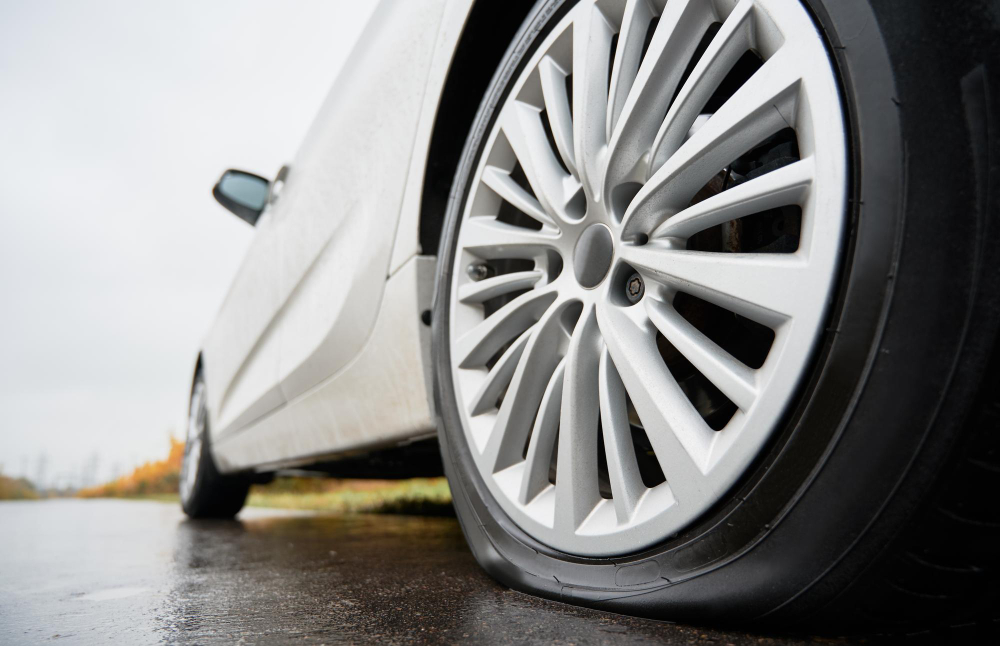Causes of Flat Tires
Flat tires are a common occurrence and can be quite frustrating for drivers. They can happen unexpectedly and can significantly disrupt our daily routine. Understanding the causes of flat tires can help us take preventive measures and reduce the chances of experiencing this inconvenient situation. In this article, we will explore the causes of flat tires in Naperville, IL, and provide some useful tips for tire maintenance.
Flat Tire Reasons
1. Tire Puncture: One of the most common reasons for a flat tire is a puncture. Punctures can happen due to sharp objects on the road, such as nails, screws, or broken glass. When these objects pierce the tire, it causes a loss of air pressure and ultimately leads to a flat tire.
2. Tire Wear and Tear: Over time, tires can wear down due to constant usage and exposure to different road conditions. This wear and tear can weaken the tire’s structure, making it more susceptible to punctures, leaks, and eventually a flat tire.
3. Underinflated or Overinflated Tires: Maintaining the correct tire pressure is crucial for the overall health of the tire. Underinflated tires are more prone to damage and can cause excessive heat buildup, leading to a blowout. On the other hand, overinflated tires can make the tire more rigid, reducing its ability to absorb shocks and increasing the chances of a puncture.
4. Impact Damage: Hitting a pothole, curb, or any other road obstacle at high speed can cause significant damage to the tire. The force of impact can lead to sidewall bulges, cuts, or even a blowout.
5. Valve Stem Issues: The valve stem is responsible for maintaining adequate air pressure in the tire. If the valve stem becomes damaged or develops a leak, it can cause a slow air leak, resulting in a flat tire.
Tire Maintenance Tips
Regular maintenance can help extend the lifespan of your tires and reduce the likelihood of getting a flat tire. Here are some essential tire maintenance tips:
1. Check Tire Pressure: Make it a habit to check your tire pressure regularly, at least once a month. Use a quality tire pressure gauge to ensure your tires are properly inflated according to the manufacturer’s recommendations.
2. Inspect Tires for Damage: Regularly inspect your tires for any signs of damage, such as cuts, bulges, or punctures. If you notice any issues, have them inspected and repaired by a professional tire technician.
3. Rotate Tires: Regular tire rotation helps promote even wear and extends the life of the tires. Consult your vehicle’s owner’s manual or seek professional advice on the recommended tire rotation intervals.
4. Avoid Overloading: Overloading your vehicle puts excessive stress on the tires, increasing the risk of a blowout. Follow the recommended load capacity specified by the vehicle manufacturer.
5. Be Mindful of Road Conditions: Drive carefully and be mindful of road conditions. Avoid potholes, debris, and other obstacles that can cause damage to your tires.
Tire Blowout Causes
A tire blowout is a sudden loss of tire pressure and can be quite dangerous, especially at high speeds. Several factors can lead to a tire blowout, including:
1. Underinflated Tires: When a tire is significantly underinflated, the sidewall flexes more than usual, generating heat, which can lead to tire failure and a blowout.
2. Overloading: Overloading your vehicle beyond its weight capacity puts excessive stress on the tires. This can weaken the tire’s structure, making it more prone to a blowout.
3. Tire Age: Tires degrade over time, even with proper maintenance. Aging tires are more susceptible to failure, including blowouts. It is recommended to replace tires that are older than six years, regardless of their tread depth.
4. Tire Damage: Any damage to the tire, such as cuts, punctures, or bulges, can weaken its structure and increase the risk of a blowout.
Flat Tire Naperville, IL
Experiencing a flat tire in Naperville, IL, can be particularly frustrating, especially if you are unfamiliar with the area. Here are some additional tips to help you handle a flat tire situation in Naperville:
1. Stay Calm and Find a Safe Spot: If you notice a flat tire while driving, try to stay calm and find a safe location to pull over. Look for a well-lit area away from traffic, such as a parking lot or a shoulder of the road.
2. Turn on Hazard Lights: Once you have safely pulled over, turn on your hazard lights to alert other drivers of your presence.
3. Call for Assistance: If you are unable to change the tire yourself or don’t have the necessary tools, it is advisable to call for roadside assistance. They can help you safely replace the tire or tow your vehicle to a nearby service station.
4. Have a Spare Tire and Tools: It is essential to have a spare tire, along with the necessary tools like a jack and a lug wrench, in your vehicle. Familiarize yourself with the location of these tools and how to use them before you find yourself in a situation requiring a tire change.
5. Get your Tire Repaired or Replaced: Once you have safely replaced the flat tire, make sure to have it repaired or replaced as soon as possible. Continuing to drive on a damaged or punctured tire can further compromise your safety.
By understanding the common causes of flat tires and adopting essential tire maintenance practices, you can reduce the chances of experiencing a flat tire and ensure a safer driving experience. Remember to stay alert on the road, regularly inspect your tires, and promptly address any tire issues to avoid inconveniences and potential dangers.
